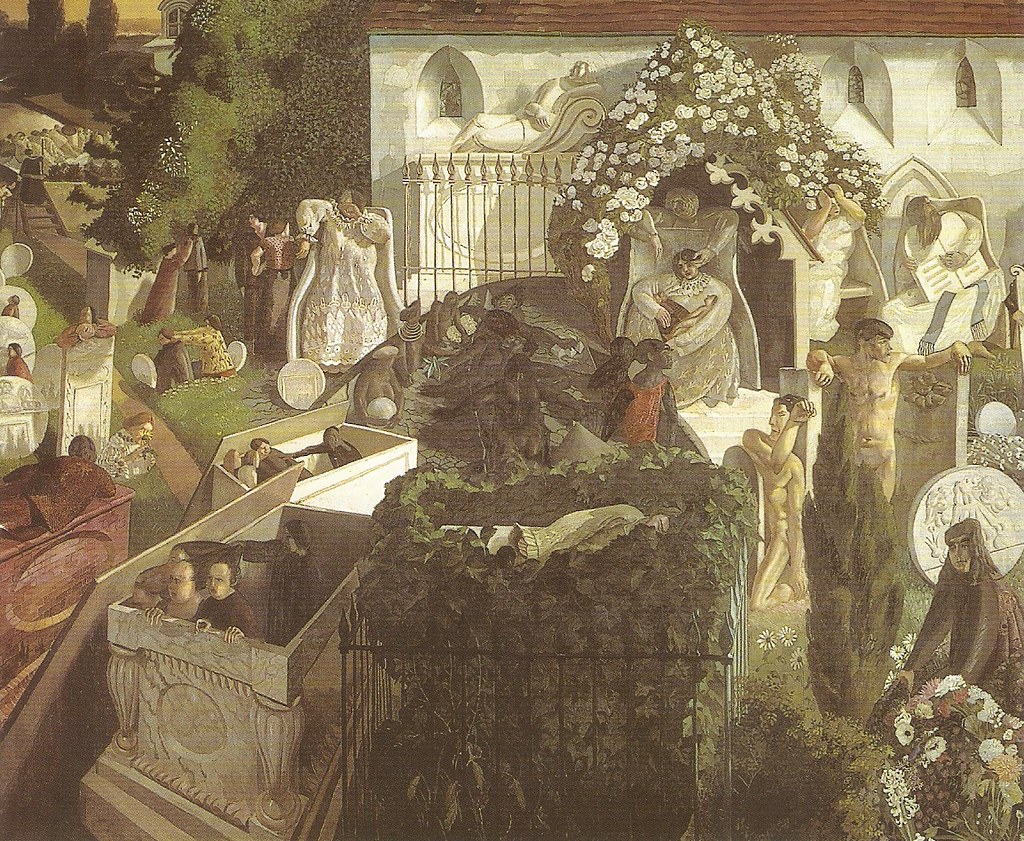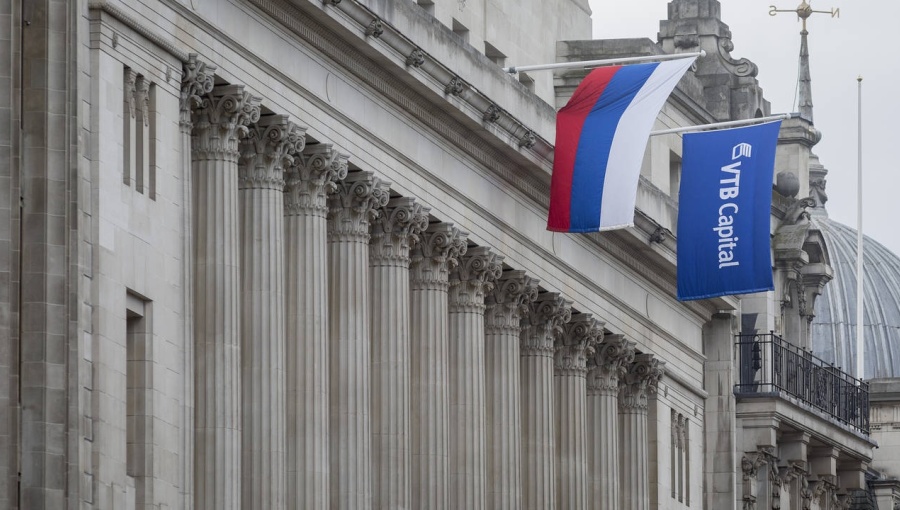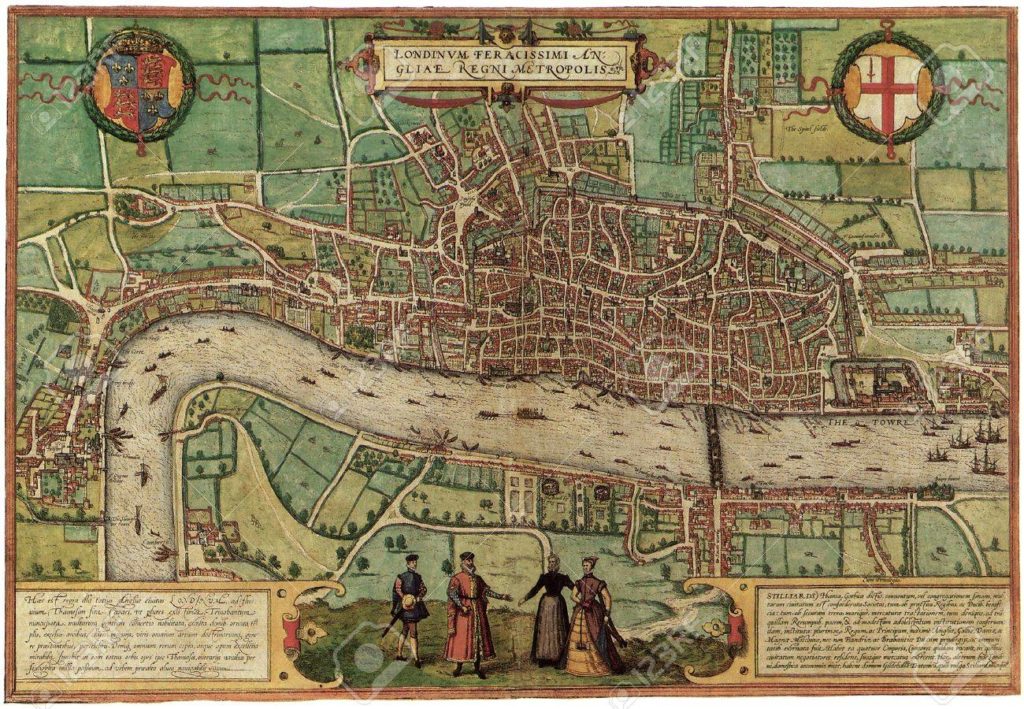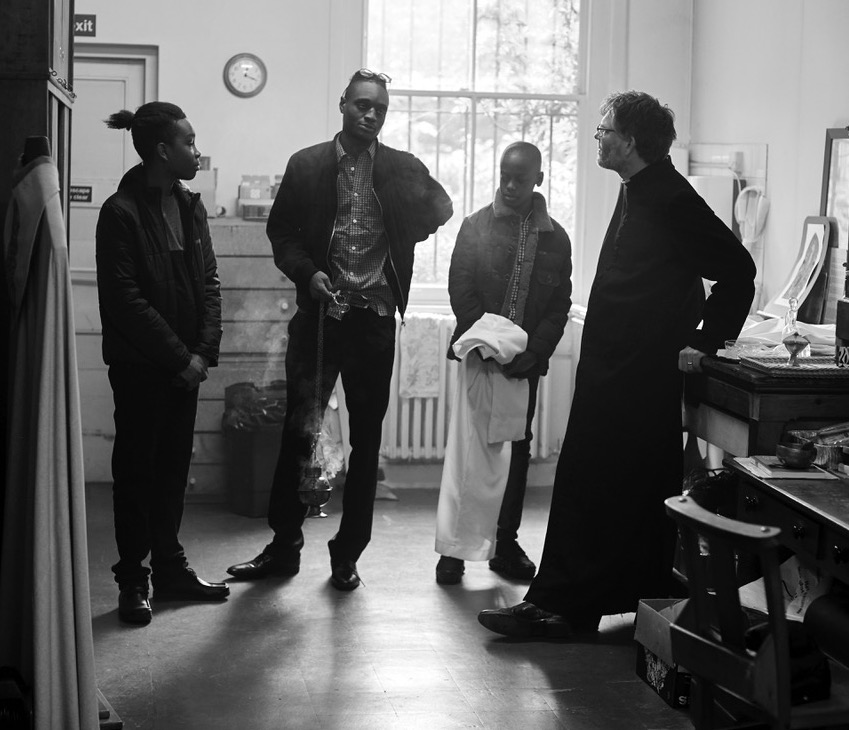In the Chatterdom of Clapton Common
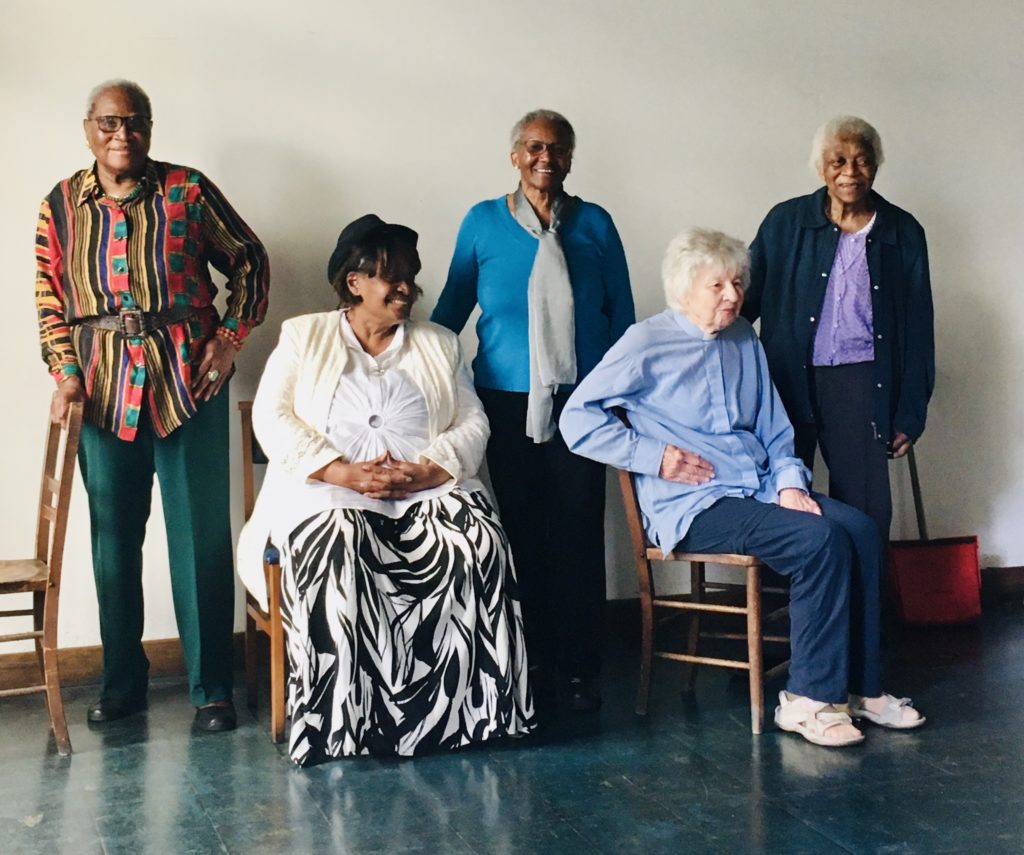
Margaret Browne (centre) with her chatterchums
Last autumn, at an open day on the Common, our church treasurer, Margaret Browne, was interviewed by a Clapton Commons volunteer, a designer called Nick Bell.
What did she like about living in Stamford Hill? What didn’t she like? And what about living alongside the Charedim, one of the largest Orthodox Jewish communities in the world outside Brooklyn?
Before retiring, Margaret spent many years on reception at the local primary school. She watched generations of children pass through it. Like others from our congregation she is from the Caribbean and recognises how important it is for young people to be able to tell their story as part of their family’s story, our national story and the story of their faith – where they have one.
In fact, she believes it is the responsibility of the community elders to help them do this. And so she wondered: Is this something that she has in common with her Charedi women neighbours?
She had been wanting to start a conversation but hadn’t known how to do it.
Nick wondered if there was a way to help Margaret.
 He thought of making a recording device that could be passed between representative community members – in the first instance, women elders. It could be left at a designated place – the coffee kiosk at Liberty Hall, say. And then by arrangement, picked up, spoken into, and passed back, to and fro.
He thought of making a recording device that could be passed between representative community members – in the first instance, women elders. It could be left at a designated place – the coffee kiosk at Liberty Hall, say. And then by arrangement, picked up, spoken into, and passed back, to and fro.
The recording could be made easily and discreetly, at home. Neither face to face contact, nor access to the internet, would be required. He wanted to create something that could combine the intimacy of the spoken word with the hermetic seal of the voicemail message, where listening was as important as speaking.
A few months ago Nick came up with a prototype. He called it the “chatterbrick”. He said it was to enable local conversations across the “chatterhood”. He said he wanted to help “chatterchums” find each other.
He hoped the project may enable a dialogue shaped by curiosity (and a little bit of branding).
Now, all we needed were the conversation partners.
One of the beautiful things about being a vicar in a Jewish area is that it has made me notice the deep seasonal interplay between our respective traditions. Well, more to the point, I realise the dependence of our liturgical year on the Jewish one. Pentecost, fifty days after Easter, not only marks the birth of the Church when the disciples experienced the pouring out of the Holy Spirit – it is also a Jewish festival.
Shavuot – also known as the Festival of Weeks – is fifty days after Passover, marking the occasion when the Torah is revealed by God to the Israelite nation on Mount Sinai. According to Midrash, Mount Sinai blossomed with flowers, which is why on this festival, Jewish families fill their homes and synagogues with fresh greenery and floral arrangements, especially lilies and roses.
In the days before Pentecost, the garden around Liberty Hall has been taken over by a local Jewish florist. Chana Greenfield has been selling bunches of roses and hydrangea and peonies and eucalyptus folded into great fistfuls of greenery, especially to her fellow Charedi women who are decorating their homes for Shavuot.
Chana has now offered to be a conversation partner with Margaret and to help her find other Charedi women who are happy to begin this listening dialogue across our communities.
As the flowers spread across the mountain, anticipating the granting of the covenant, so may our conversations also blossom – and help Margaret and others find that covenant relationship between neighbours in the Chatterdom of Clapton Common.

Chana Greenfield
A longer version of this article can be found on the website for Together for the Common Good




